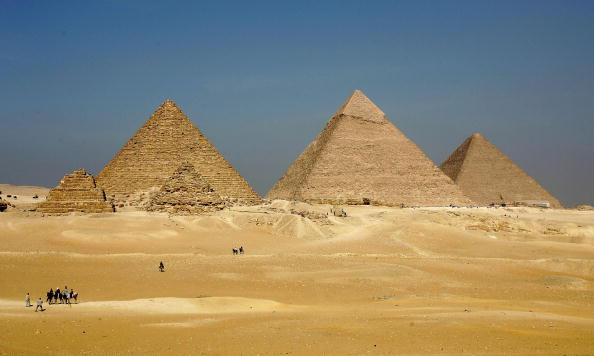Oldest papyrus ever found reveals details of Great Giza pyramid's construction
The 4,500 years old papyrus has just been displayed in public in Cairo Museum

Ancient documents described as the oldest papyruses in existence have been put on display at the Egyptian Museum in Cairo. The 4,500-year-old documents, unveiled at the museum last Friday (15 July 2016), appear to detail the steps of the Great Pyramid of Giza's construction as well as the daily lives of workers.
The pyramid is believed to have been completed between 2560 and 2540 BC under Pharaoh Khufu's reign – during the Fourth Dynasty of Egypt. Some scholars believe the King's Chamber at the heart of the pyramid contains his royal remains, but this has not yet been proven.
Analysing these papyruses may solve a number of other mysteries regarding the construction of the pyramid.
The documents were unearthed three years ago during excavations led by the French Institute for Eastern Archaeology at the Wadi el-Jarf archaeological site.
After years of careful examination, the rare documents have been publicly displayed for the first time.
Allusion to the construction
Wadi el-Jarf is situated on the coast of the Red Sea, and is the oldest-known artificial harbour in the world. It served as major communication corridor between the Nile Valley and the Red Sea. In 2013, during excavation works, 300 fragments of papyri were recovered from ancient boat storage facilities.
Most of the documents, which date back to Egypt's fourth (2613 to 2494 BC) and fifth (2494 to 2345 BC) dynasties, are 'bureaucratic' account books – with records of monthly food deliveries from various regions, including the Nile Delta. But the most interesting find was a personal logbook providing details of the construction of the pyramid – which dates back to 4,500 years ago. For the first time there is written evidence directly alluding to the building of this 'wonder of the world'.

According to archaeologists Pierre Tallet and Gregory Marouard – who led the team that discovered the papyri – this logbook was written in hieroglyphics by a man named Merer, who was in charge of a team of about 200 workers. In a paper published in 2014, Tallet and Marouard explain that Merer used the papyrus to transcribe the details of many operations related to the construction of the Giza pyramid, and to describe the work at the limestone quarries on the opposite bank of the Nile.
The papyrus reveals that the limestone was brought from the site of Tura, near Cairo, by boat along the Nile river. The logbook also says that in Khufu's 27th year, the construction of the Great Pyramid was being overseen by the vizier Ankhaf – a high-ranking official and half-brother of Khufu.
This papyrus thus allows archaeologists to discover detailed information about the history of the pyramid and better understand how the 139-metre-tall structure (originally almost 147 metres tall) was constructed. Now, the public can access this unique relic to the Ancient Egyptian civilisation.
© Copyright IBTimes 2025. All rights reserved.






















